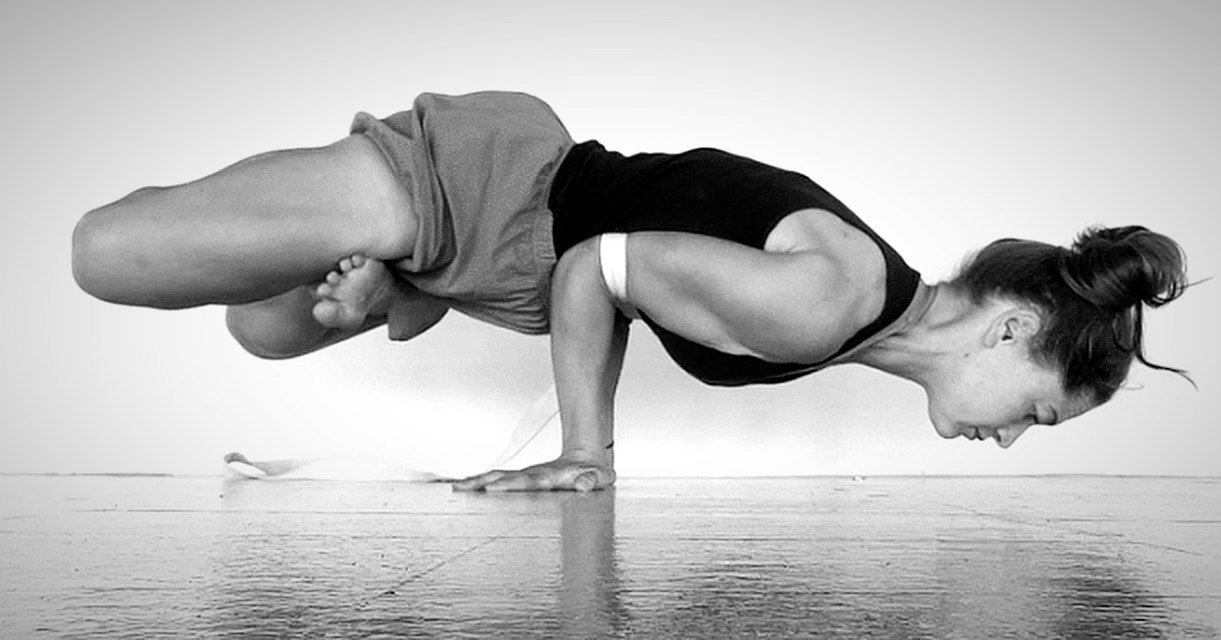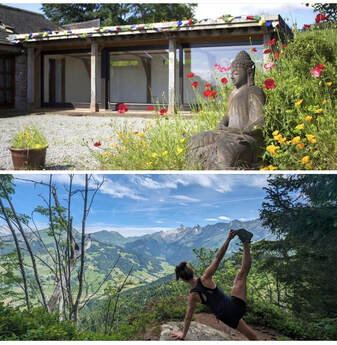|
This blog post is an introduction into Yoga philosophy, if you're interested in finding out more, click here for my free yoga philosophy beginners course. Regardless of whether you fully invest in the ideas or not I hope you find them enjoyable and interesting.
Namaste. In the West when we say we are going to a Yoga class, we really mean we are going to a “Yoga-asana” class. Asana means pose or seat, in Sanskrit. The names of the poses we do, all end in Asana, eg. ‘Tadasana’ is mountain pose because Tad means mountain and Asana means pose. The asanas are the yoga poses & postures that improve the wellness of the body and mind, so we can experience life at a higher state of awareness and clarity. Our experience of the world depends entire upon the state of our nervous system, the asanas stabilise and revitalise the nervous system, strengthen and open the body, whilst settling the mind. There are many different schools of asana practice. I am an Iyengar Yogasana teacher because I’m trained in the method that was created and taught by BKS Iyengar and his family, who continue to teach & develop this method in Pune, India. However, the Asanas are just one ‘branch’ of a larger ‘8-branched-system’, that is traditionally known as Astanga Yoga.* You can just practice the branch of the asanas, and feel much better for it. However, “If you do just stick to one branch, then it is like buying an 8-step ladder only using the first step, then thinking ‘Oh this is good, I’ll stop right here’.”** This 8-branched-system is known as Astanga Yoga** because “Asta” in Sanskrit means 8 The 8 parts are:
‘Yoga is an 8 branch system that allows us to move from our ‘over-identification’ with our changing body and fluctuating mind, and ‘re-identify’ with what we truly are.’ The concept of what we truly are, is that we are something much bigger, and better, than our body, mind, emotions, thoughts, memories, roles we play, and the possessions we own. These are false identities. We will explore this more in blog 2.
** Quote from Jackie Pascal, A US based yoga teacher. ***Astanga yoga is also the name of a type of asana practice. Its full name is Astanga-vinyasana. This was an asana practice developed by a contemporary of BKS Iyengar yogi called Pattabhi Jois and this is not the Astanga Yoga that I’m referring to in the above. This is lesson one of a free yoga philosophy course, click here for the full Introduction to Yoga Philosophy course. The introduction to Yoga Philosophy course separated out the 8 different branches of ashtanga yoga for deeper consideration.
Now let's link them back together again and view yoga as a holistic system through the lens of the branch we practise in Iyengar Yoga, the Yoga Asanas (branch 3) Yoga is self-study, (self-study remember is Svadhyaya, one of the Niyamas, branch 2) In Asanas we observe our physical bodies. We do an action, then we observe the reaction. For example, if we grip our outer hip sockets in, we feel an internal lift at the groins. A beginner may not be able to feel or understand this action, so may just start by learning where their outer hip sockets are. As we advance in our yoga practice, we become more knowledgeable, more awake, more sensitive, and more conscious to our physical bodies and unconscious habits. We experience the poses acting on our bodies at a deeper level, on the muscles, bones, tissues, our internal functioning, and at an energetic level. The Asanas are deeply therapeutic. As we advance, over the months and years, we develop a deeper level of awareness with ourselves, a deeper level of self-study. We don't necessarily become more ambitious or advanced in the types of poses we practice; we accept that a younger body will be able to do more than an older body. We will undoubtedly develop strength, stability, and flexibility, but this isn't the goal. Rather these are the necessary tools we need in order to achieve the goal. The goal is deep awareness, deep self-study. We need to build the stability and stamina in the body because the longer we can hold a pose without strain, the longer we can observe ourselves at a more subtle level & learn. As a beginner, we may be able to hold a pose for 30 seconds before the body becomes unstable. As the body starts to fade and strain, the mind becomes unsettled. Once the breath becomes ragged and we start pushing it stops being Yoga. But as we advance in our practice, we might be able to hold a pose for up to 8 minutes, giving us much more time to observe the reactions in the body, the sensations in the body, what comes up in the mind and how the mind responds. Similarly, the mind of a beginner can be unrefined, impatient, scattered, distracted, or aggressive. We can't hold focus for long. We start thinking about what’s happening after class, or how long we have to hold the pose, or we start pushing with our ego trying to force our head to our shin, or copying our neighbour rather than responding to your own body. In the final pose of savasana (a form of pratyahara, and dharana - branches 5 and 6) it may feel impossible for a beginners to be still for more than 1 min. Its understandable if total beginners lie there thinking about distractions, rather than observing themselves and staying present. They may get bored, impatient or fall asleep. Advanced yogis can stay in savanasana for 10 -15 minutes in a state of relaxed concentration, completely present and aware but passive and relaxed. As our sensitivity and ability to rigorously observe ourselves develops it is important we remember the yamas and the niyamas ( values and behaviours, branches 1 &2 ) that must underpin HOW we do our Asanas, (poses, branch 3) & pranayama (breath work, branch 4). We should strive to follow the following Yamas and Niyamas in our practice:
Namaste Kate This is lesson 8 of a free yoga philosophy course, click here for the full free Introduction to Yoga Philosophy course.
New events will be listed on the website when they become available.
|
BlogYoga with Kate Stannard
�
Archives
September 2023
Categories |






